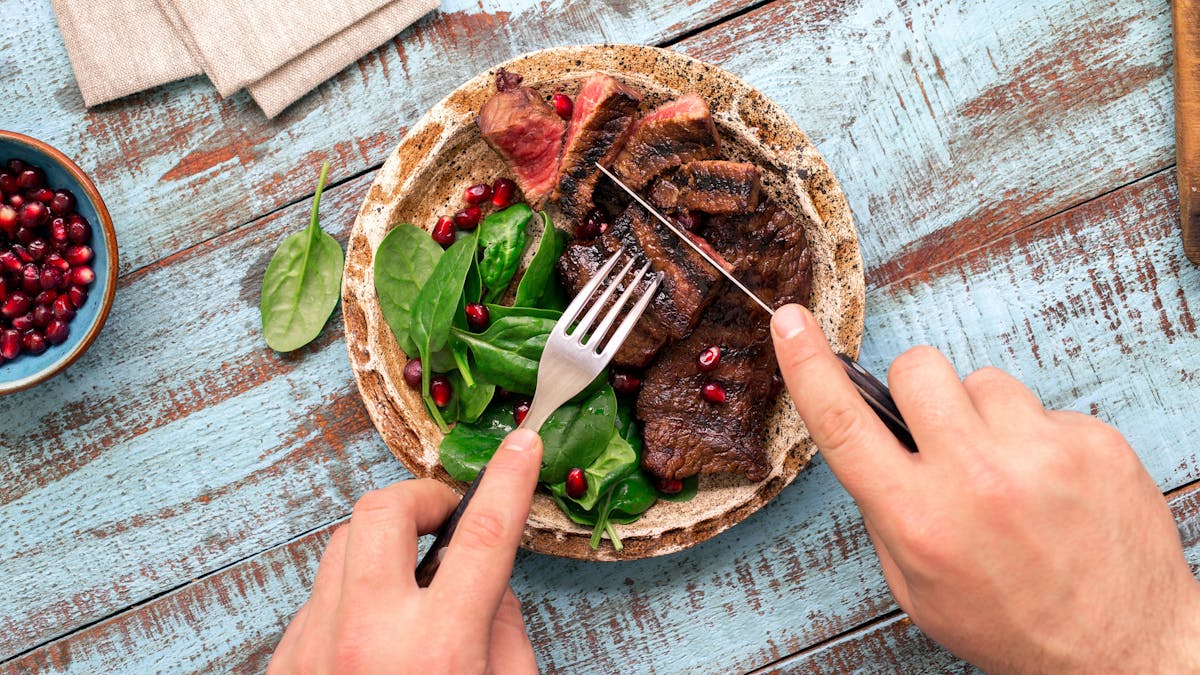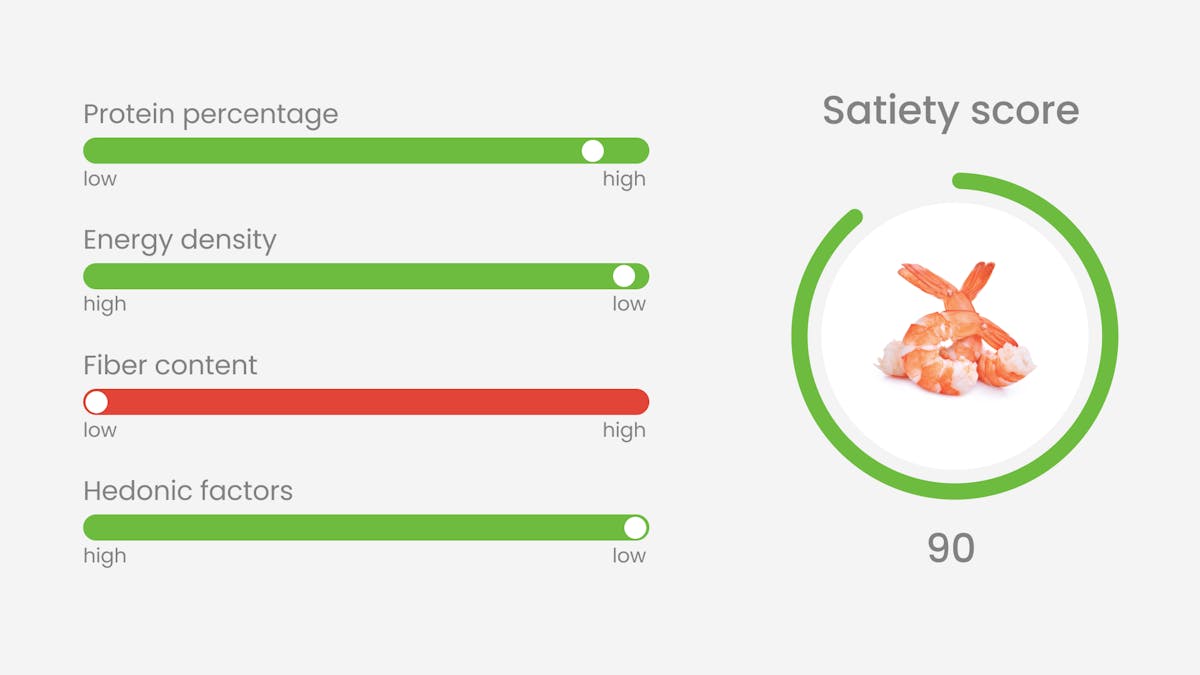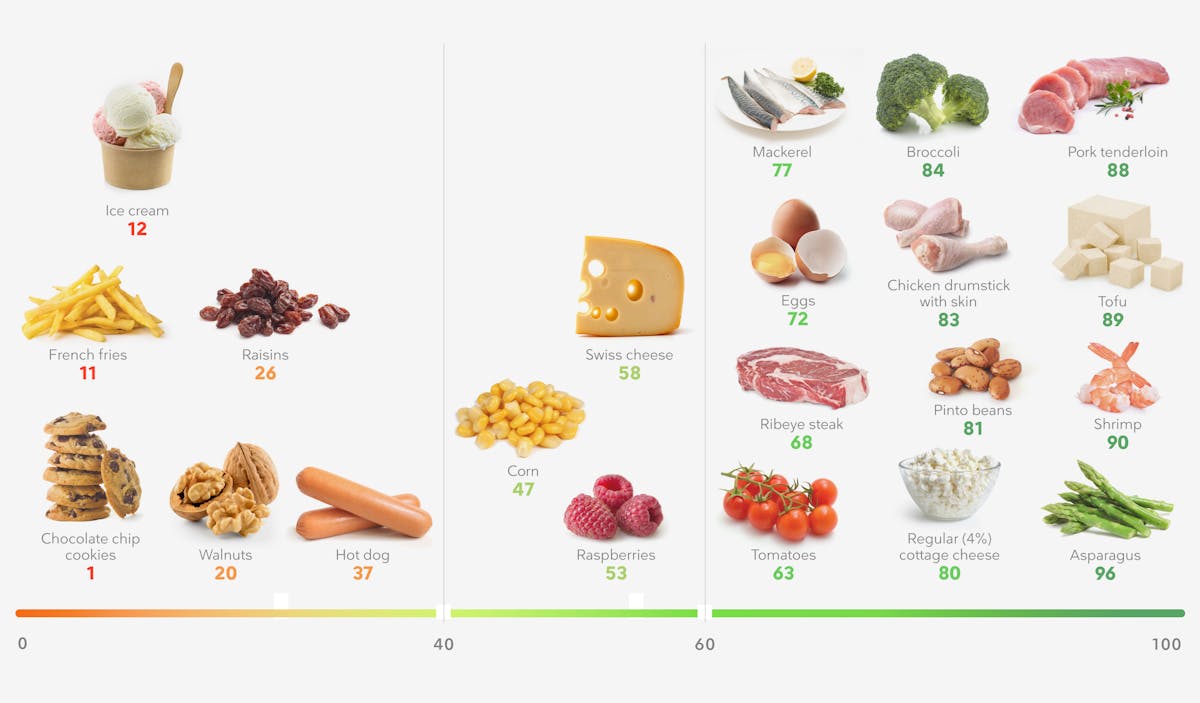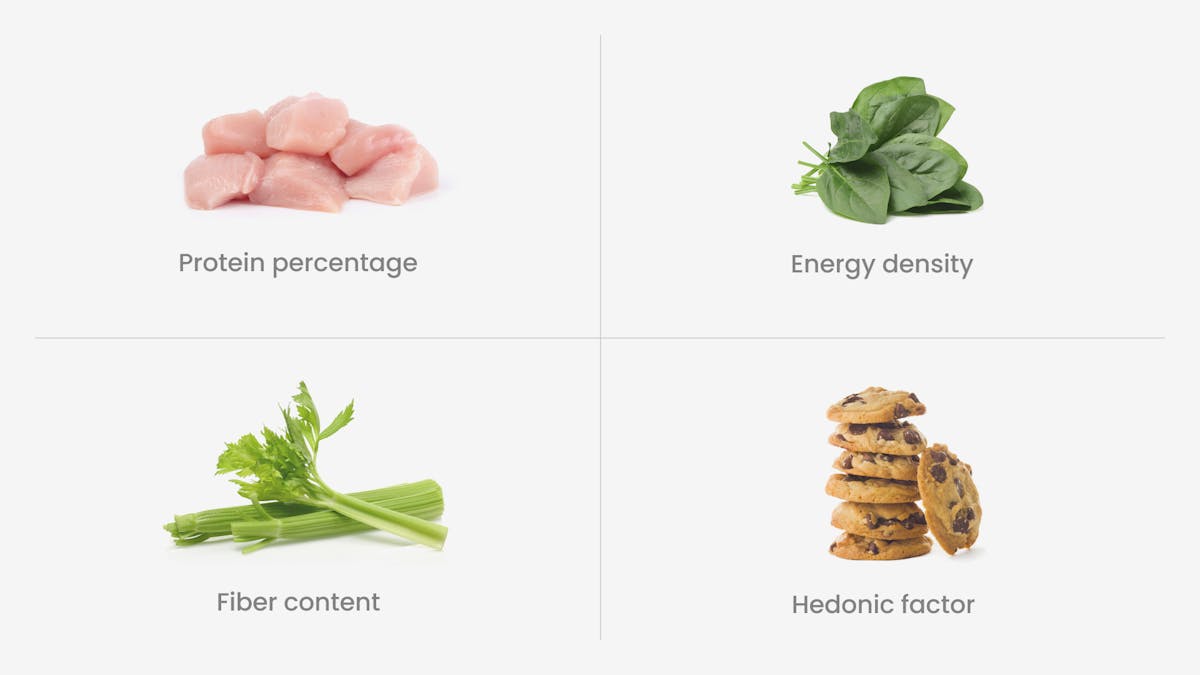Read more about the studies that support higher-satiety eating

You’ve likely heard us mention the value of higher-satiety eating. By focusing on the most satiating foods, you will naturally eat less while enjoying your food and getting all the protein and nutrients you need — without the hunger and cravings that can accompany calorie restriction.
This isn’t just our opinion — it is based on a solid scientific base. We summarize this evidence in our guide, The science of satiety per calorie.
If you are looking for a deeper dive into the science behind our satiety-per-calorie approach, we now have three new, more extensive evidence-based discussions of three of the distinct components of high-satiety eating:
- Protein percentage
- Energy density
- Hedonic factors
In our new, protein-focused guide, we discuss the science showing that eating more protein reduces the feeling of hunger and helps people naturally reduce their daily calorie intake. The best evidence supports increasing protein from a low level, such as 10 to 15% of daily calories, to a moderate level of 20-25% of calories. Going higher than 25% may provide continued benefits, but with diminishing returns compared to 20 to 25% of daily calories.
Next, we tackle the science of energy density. Numerous studies demonstrate that eating low-energy-density foods tracks with healthy weight loss and improved satiety. Low-energy-density foods also tend to be higher in fiber, take up more space in your stomach, and take longer to eat and to digest. Think a big leafy salad compared to handful of chips or nuts. All of these factors may contribute to the beneficial effects of low-energy-density foods.
Finally, we cover the science of hedonic foods. Studies are clear that eating ultraprocessed foods leads to greater caloric intake. This is also true for foods that combine refined carbs, sugar, fat, and salt without much protein or fiber. Avoiding these hedonic foods is an important tactic for higher-satiety eating.
Together, these three in depth guides provide the scientific rationale upon which we base our higher-satiety eating approach.
While our formula for calculating satiety scores has not been studied in randomized trials, it’s based on the science supporting each individual component.
Here’s an analogy. Quitting smoking, lifting weights, and cutting ultra processed foods all have strong scientific support as individual interventions but haven’t been tested together in rigorous trials. It makes sense, however, to combine these activities to improve your health.
So check out these guides to decide for yourself if higher-satiety eating could be the right approach for you.
For more information about our higher-satiety approach, see our other educational guides:
Introducing our new satiety score
Using our new satiety score will help you pick the right delicious foods for sustainable healthy weight loss.
The best high-satiety foods
Which foods can help you feel full and satisfied while you lose weight? Find out in our guide to the best high-satiety foods.


